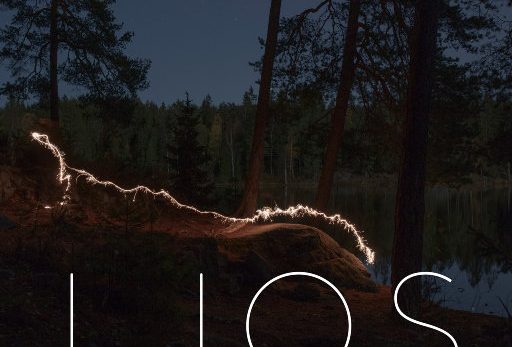简介
格式:FLAC
码率:24 bit / 96 kHz (Tracks)
流派:古典
发行日期:2021-06-18
收录曲数:14首
录音时长:
总大小:1.4GB
公司: DG
韩国小提琴演奏家Bomsori是韩国的超级巨星,在世界范围内备受欢迎。她在德国留声机(Deutsche Grammophon)推出了自己的首张个人专辑。《舞台上的小提琴》将于2021年6月18日在全球发行,其中包括为歌剧或芭蕾创作或受其启发的作品。去年12月,在国家音乐论坛(Wrocław)与NFM Wrocław爱乐乐团及其音乐总监吉安卡洛·格雷罗(Giancarlo Guerrero)合作录制的这张专辑也捕捉到了波索里与波兰、波兰音乐和波兰音乐家之间的亲密关系。
小提琴家选择的曲目反映了她想通过乐器富有表现力的声音与观众交流的愿望。她说:“我不是一个大声说话的人——我通常在日常生活中不怎么说话。”“但这就是我喜欢拉小提琴的原因,因为我可以通过音乐说话和交流。我从小就喜欢唱歌和芭蕾舞,总是被听到的声音和看到的舞者所感动。我想通过我的乐器把诗歌和戏剧的特殊精神带给听众,因为我的乐器可以在这些美妙的作品中自由歌唱。”
通过她的新专辑,Bomsori也重新连接到旧大师的艺术传统。音乐史上许多著名的小提琴家,如海菲兹、米尔斯坦和科根,为他们的乐器编曲,以发展他们的艺术能力,并开玩笑地测试他们的极限。今天,这一习俗已经不那么普遍了,但Bomsori正在复兴这一习俗,并以精湛的演奏扩大了著名的小提琴曲目。
在芭蕾舞界,这位小提琴家选择了格拉克的《欧瑞狄斯》中的《灵之舞》和柴可夫斯基的《胡桃夹子》(1892)中的《双人舞》,后者是近代浪漫主义音乐的永恒里程碑。这两首作品都是新近为小提琴独奏和管弦乐演奏而改编的,她的表演唤起了乐谱最初为舞者所写的毫不费力的优雅。
邦索利为“Méditation”增添了更细腻的抒情性。“Méditation”是马斯内的《Thaïs》第二幕幕间穿插的一段交响乐。在歌剧方面,她展示了迈克尔·罗特(Michael Rot)改编自Saint-Saëns的《参孙与达利拉》(Samson et Dalila)的《Mon cœur s ‘ouvre à ta voix》,这是所有咏叹调中最美丽的一首。她还表演了这位作曲家的《导言和回旋曲》(Introduction and Rondo caprcioso),这首歌本身类似于歌剧的朗诵和咏叹调,时而内省,时而外向。
同时,在Bomsori对Franz Waxman的《卡门幻想曲》的表演中,他将奔放的情感和技术的魔法结合了起来。Franz Waxman最著名的作品是好莱坞大片《弗兰肯斯坦的新娘》、《后窗》和《日落大道》。这位作曲家把比才(Bizet)的《卡门》(Carmen)的曲调混合在一起,作为他在1946年获得奥斯卡奖的电影《幽默》(Humoresque)的原声带的一部分,并很快把它变成了一场引人注目的音乐会。
《舞台上的小提琴》的灵感还来自于Bomsori对波兰和波兰音乐的热爱,2016年她在国际Henryk Wieniawski小提琴比赛上的巨大成功点燃了她对波兰和波兰音乐的热爱,自她与DG艺术家Rafał Blechacz的合作伙伴关系以来,激励了她。此外,她还与NFM Wrocław爱乐乐团和Giancarlo Guerrero密切合作,在上一季的美国巡演中,她与Giancarlo Guerrero共同演奏了Szymanowski的第一小提琴协奏曲。
专辑中收录了Wieniawski的三部作品,他是波兰历史上最伟大的小提琴家之一,也是一位优秀的乐器作曲家。除了经久不衰的Légende和Polonaise de Concert之外,Bomsori还以古诺的《浮华》为主题表演了《辉煌幻想曲》,这是一场罕见的演出,分为五个对比鲜明的部分,将我们带回到歌剧的世界。
博索里说:“我觉得我作为小提琴家的个人色彩反映在维尼亚夫斯基的音乐中。”“我喜欢他轻快的旋律和精湛的技艺,所以我不得不在这里加入他的一些音乐。在美丽的城市Wrocław和朋友们一起为德意志留声机录制第一张唱片,我感到很高兴,我真心希望它能给人们带来和我们在会议期间一样的快乐。”
A superstar in her homeland and in high demand worldwide as a soloist, South Korean violinist Bomsori now presents her solo debut album on Deutsche Grammophon. Set for international release on 18 June 2021, Violin on Stage includes works written for or inspired by opera or ballet. Recorded at the state-of-the-art National Forum of Music in Wrocław last December with the NFM Wrocław Philharmonic and its Music Director Giancarlo Guerrero, the album also captures the close bond Bomsori feels with Poland, its music and its musicians.
The violinist’s chosen repertoire reflects her desire to communicate with her audiences through her instrument’s expressive voice. “I’m not a loud person – I usually don’t talk much in everyday life,” she says. “But that’s why I love playing the violin, because I can speak and communicate through music. I’ve loved singing and ballet since I was a small child and am always moved by hearing voices and watching dancers. I wanted to bring that special spirit of poetry and drama to listeners through my instrument, which can sing freely in these wonderful pieces.”
With her new album Bomsori is also reconnecting with the virtuoso tradition of the old masters. Many famous violinists in music history – figures such as Heifetz, Milstein and Kogan – arranged pieces for their instrument in order to develop their artistry and playfully test their limits. Today the custom is less widespread, but Bomsori is reviving it and expanding the well-known violin repertoire with virtuosic transcriptions.
From the world of ballet, the violinist has chosen “The Dance of the Blessed Spirits” from Gluck’s Orfeo ed Euridice and the “Pas de deux” from Tchaikovsky’s The Nutcracker (1892), a timeless landmark of late Romantic music. Her performances of both works, newly transcribed for solo violin and orchestra, evoke all the effortless grace of the dancers for whom the scores were originally written.
Bomsori brings more exquisite lyricism to the “Méditation”, a symphonic intermezzo originally played between scenes in the second act of Massenet’s Thaïs. Staying with opera, she presents Michael Rot’s new arrangement of “Mon cœur s’ouvre à ta voix” from Saint-Saëns’s Samson et Dalila, among the most beautiful of all arias. She also performs the composer’s Introduction et Rondo Capriccioso, which itself resembles an operatic recitative and aria, by turns introspective and extrovert.
Unrestrained emotions and technical wizardry combine, meanwhile, in Bomsori’s performance of the Carmen Fantasie by Franz Waxman, best known for his scores to such Hollywood hits as The Bride of Frankenstein, Rear Window and Sunset Boulevard. The composer created this medley of tunes from Bizet’s Carmen as part of his Oscar-winning soundtrack for the 1946 film Humoresque and turned it into a showstopping concert piece soon after.
Violin on Stage was also inspired by Bomsori’s love for Poland and Polish music, ignited in 2016 by her spectacular success at the International Henryk Wieniawski Violin Competition and fuelled since by her duo partnership with fellow DG artist Rafał Blechacz, as well as by her close collaboration with the NFM Wrocław Philharmonic and Giancarlo Guerrero, with whom she played Szymanowski’s Violin Concerto No.1 on tour in the US last season.
The album includes three works by Wieniawski, one of the greatest Polish violinists of all time and a fine composer for his instrument. In addition to his eternally popular Légende and Polonaise de Concert, Bomsori also performs the Fantasia brilliante on themes from Gounod’s “Faust”, a rarely heard showpiece in five contrasting sections which takes us back to the world of opera.
“I feel my personal colour as a violinist is reflected in Wieniawski’s music,” says Bomsori. “I love the lightness of his melodic lines and his virtuosity, so I had to include some of his music here. It was a joy to make my first recording for Deutsche Grammophon with my friends in the beautiful city of Wrocław and I truly hope it will bring people as much pleasure as we had during the sessions.”
1. Polonaise de concert, Op. 4 (Orch. Kornowicz) (5:47)
2. The Nutcracker, Op. 71, TH 14 : Pas de deux (Arr. Rot for Violin and Orchestra) (5:10)
3. Carmen Fantasie (10:50)
4. Orfeo ed Euridice, Wq. 30 : Dance of the Blessed Spirits (Arr. Rot for Violin and Orchestra) (3:30)
5. Thaïs : Méditation (5:29)
6. Introduction et Rondo capriccioso, Op. 28, R. 188 : I. Introduction (1:33)
7. Introduction et Rondo capriccioso, Op. 28, R. 188 : II. Rondo capriccioso (7:44)
8. Samson et Dalila, Op. 47, R. 288 : Mon coeur s’ouvre a ta voix (Arr. Rot for Violin and Orchestra) (7:09)
9. Légende Op. 17 (7:41)
10. Fantasia on Themes from Gounod’s ‘Faust’, Op. 20 : I. Allegro moderato (3:21)
11. Fantasia on Themes from Gounod’s ‘Faust’, Op. 20 : II. Andante non troppo (3:09)
12. Fantasia on Themes from Gounod’s ‘Faust’, Op. 20 : III. Allegro agitato non troppo (2:20)
13. Fantasia on Themes from Gounod’s ‘Faust’, Op. 20 : IV. Moderato (5:05)
14. Fantasia on Themes from Gounod’s ‘Faust’, Op. 20 : V. Tempo di Valse: Allegro non troppo (3:28)
1snF6AmTLHkA4-k30Sr70Pg?yjgn
神秘代码使用方法,关注右侧微信号回复“神秘代码”。
或前往兔圈https://q.in2s.net/。
如果存在资源缺失的情况,前往兔圈反馈。https://q.yintu.org/d/4/24
Call for corresponding copyright protection
This site only provides a brief introduction to music and some of their own understanding of music
Music download service and connection are not provided. Copyright is respected. Please go to the official website for download
If the above Music profile or album cover picture infringes your rights and interests
You can contact me to delete it now banquan@in2s.net





